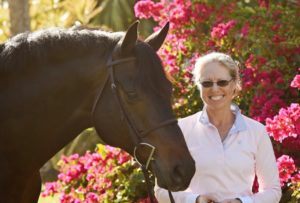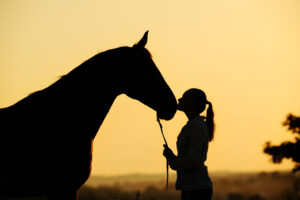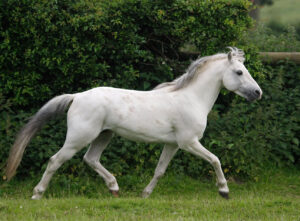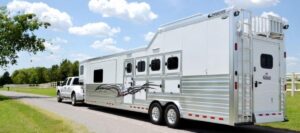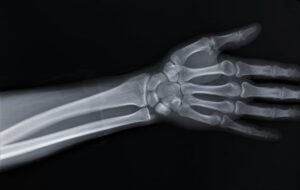Without fanfare, the U.S. Center for SafeSport rolled out a new version of its “Code,” effective April 15, 2019. The new version of the Code can be found here. The old version of the Code is no longer available on the Center’s website, and thus those unfamiliar with the replaced document will lack context to appreciate the radical changes that were made. However, a quick review of the current Code reveals an organization that is intent on operating without bounds on its discretion, without regards to individual due process rights, without transparency, and without affording anyone meaningful recourse from its decisions. While its mission may be laudable, its operation is being widely criticized. The newest version of the Code will only make a bad situation worse. Attorneys representing equestrians are cautioned to review the Code, which applies not only to members of the United States Equestrian Federation (“USEF”), but to virtually anyone involved with equestrian sport. While a non-member of USEF might wonder how being sanctioned for a violation of SafeSport Code could possibly impact them, the Code’s new “aiding and abetting” policy pulls virtually anyone under the Center’s jurisdictional umbrella.
For those who have not yet considered the impact of SafeSport on equestrian sport, it is crucial to understand that Congress placed the Center under the jurisdictional umbrella of the United States Olympic Committee with authority over all national governing bodies of amateur sport. This means that the national governing bodies have no choice but to honor sanctions imposed by the Center. The Center operates independently of USEF, but USEF must comply with its mandates. It is also important to understand that the Center believes its mission to include not only the protection of minor athletes from sexual predators, but to extend to preserving the “image” and “public perception” of the Olympic movement. To this end, the Center believes it has the absolute discretion to ban any person whose participation it believes the public might perceive as a “tarnish” on the holy-like glow of the five entwined circles that symbolize the Olympic movement.
The first major change to the Code addresses the concern raised by some critics that those banned from sport for a Code violation were only banned from participating in competitions governed by a national governing body (“NGB”), which for equestrians is USEF. Critics complained that banned individuals could still coach minors outside of recognized competitions, which did little to protect minors from the kind of predatory behavior the Center is charged with eradicating. With the addition of a prohibition on “aiding and abetting” Code violations, the Center has made it a violation of the Code to have any kind of business or coaching relationship with a banned individual.
Thus, if a person continues to train with or employ a banned individual, then that person is themselves committing a violation of the Code for which they can be banned. The implications are intended to be far reaching, and the potential effects are staggering, particularly in light of the fact that the Center applies the Code retroactively and without regard to any statute of limitations.
The new “aiding and abetting” provision also specifically applies to attorneys and advocates representing clients involved in the SafeSport process. The new version of the Code clarifies that the Center’s investigation and arbitration (hearing) process is strictly confidential, and any violation of confidentiality constitutes a violation of the Code. Thus any attorney who the Center’s director believes has violated the “cone of silence” is subject to sanction (up to and including a lifetime ban). This feature of the revised Code highlights the Center’s obsession with preventing attorneys handling SafeSport cases from sharing their experiences and compiling any body of precedent. Since the Center does not publish any arbitration decisions, the only way anyone can learn about the result of any challenge to a sanction is through a party’s voluntary disclosure. Again, it is important to keep in mind that the only way to challenge a sanction imposed by the Center is to pursue arbitration, which according to the Code is not only strictly confidential, but final and binding. Accordingly, it appears the Center has bestowed upon itself the unfettered ability to both gag attorneys and punish them — both for doing their jobs and for engaging in customary professional mentoring with colleagues.
The seemingly boundless scope of the Center’s jurisdiction, the potential for abuse, and the lack of meaningful recourse, are astounding.
For those attorneys feeling outrage after reading this far, thoughts necessarily turn to the obvious violation of Constitutional protections. However, given the current state of the law, it is very clear that the Center is not a “state actor,” and is not legally required to operate within the bounds of the Constitution.
While the concept of the Center as a state actor may be ripe for challenge, it is obvious the Center hopes to discourage anyone from bringing such a challenge. Because the Code itself makes the arbitration process final and not subject to appeal, it is possible that appealing a sanction to court will per se be treated by the Center as a violation of the Code. The practical effect of such an application of the Code would mean that the Center could theoretically ban an attorney for pursuing an appeal on a client’s behalf. Clearly, the Center only stands to benefit from preventing attorneys from collaborating with one another in pursuit of developing any kind of proficiency in handling SafeSport cases, as well as discouraging attorneys from taking on SafeSport cases in the first place.
SafeSport and USEF recently issued guidelines governing permissible interaction between adults and minor sport participants, to include absolute prohibition on 1-1 contact and physical touching of any kind. Yes, this means that hugging is now banned, as is any interaction that does not occur within the view of others. How this will pan out given the realities of human existence is easy to predict: it will be a nightmare where virtually every adult will be in technical violation of the Code on a regular basis. Minor participants will basically require constant supervision by a parent or guardian in order to avoid exposing other adults to the risk of an inadvertent Code violation.
How that inures to the benefit of growing participation in amateur sports is a reasonable question to ponder.
Given the lack of transparency with which the Center operates, it is also important to note that invoking a review of any decision it makes requires the target of the sanction to pay the costs of the arbitration in advance. The costs and fees currently exceed $5000. While there is a financial hardship exception, it is unknown whether it has ever been granted. Furthermore, it is clear that there is no recourse to the Center’s denial of a hardship fee waiver, giving new meaning to the phrase “you have to pay to play.”
Furthermore, it is important to note that while the Center’s mission is to protect minor athletes, the Code affords the Center’s director seemingly unfettered discretion to determine what conduct poses a threat to minor athletes (keeping in mind that the Code can be applied retroactively and without any applicable statute of limitations). This means an interaction that is alleged to have occurred decades ago is sanctionable tomorrow – and indeed, the Center has imposed bans on individuals for misconduct alleged to have occurred long ago and in the absence of any current allegation of misconduct.
On the basis of a decades-old conviction for criminal behavior of any kind, a lifetime ban from the sport is a possible sanction. In other words, the victim of the misconduct does not have to have been a minor and the misconduct does not have to have been sexual in nature. How the Center can claim immunity from exercising this kind of latitude inconsistently with its founding mission may form the basis for harsh criticism, but it has yet to be the basis for any court challenge.
In summary, practitioners are counseled to familiarize themselves with the SafeSport Code and understand its implications and the far-reaching consequences to their clients involved in any Olympic sport (including equestrian sport). The Center is new, the currently effective version of the Code is even newer, the Center operates by its own design under a virtually impermeable shroud of secrecy, and the latest version of the Code suggests that the Center intends to expand its jurisdiction and tighten its grip on amateur sport without any regard to operating within the limits dictated by common notions of fundamental fairness. While the Center has a laudable mission and undoubtedly has the ability to do good, it has not demonstrated (in its short history of operations) any willingness to reasonably constrain its jurisdiction to cases of sexual predators who pose a current and objectively ascertainable threat to minor athletes. It remains curious to most observers that the Center seems unconcerned with establishing and developing a reputation for legitimacy, but that lack of concern merely amplifies the unpredictability of the process faced by those upon whom the Center focuses its attention.

